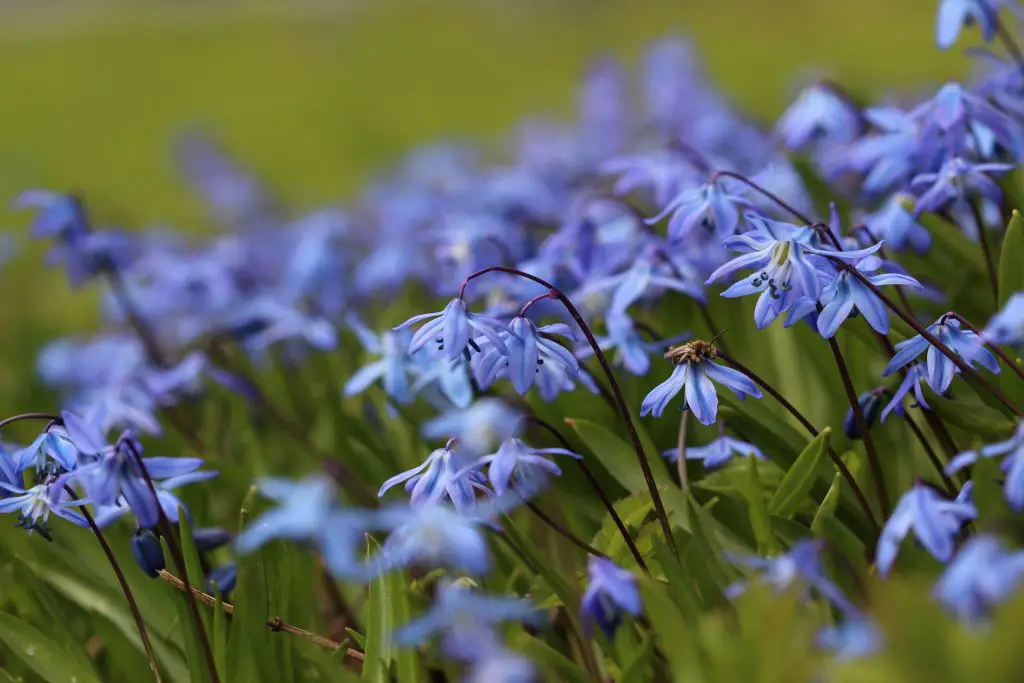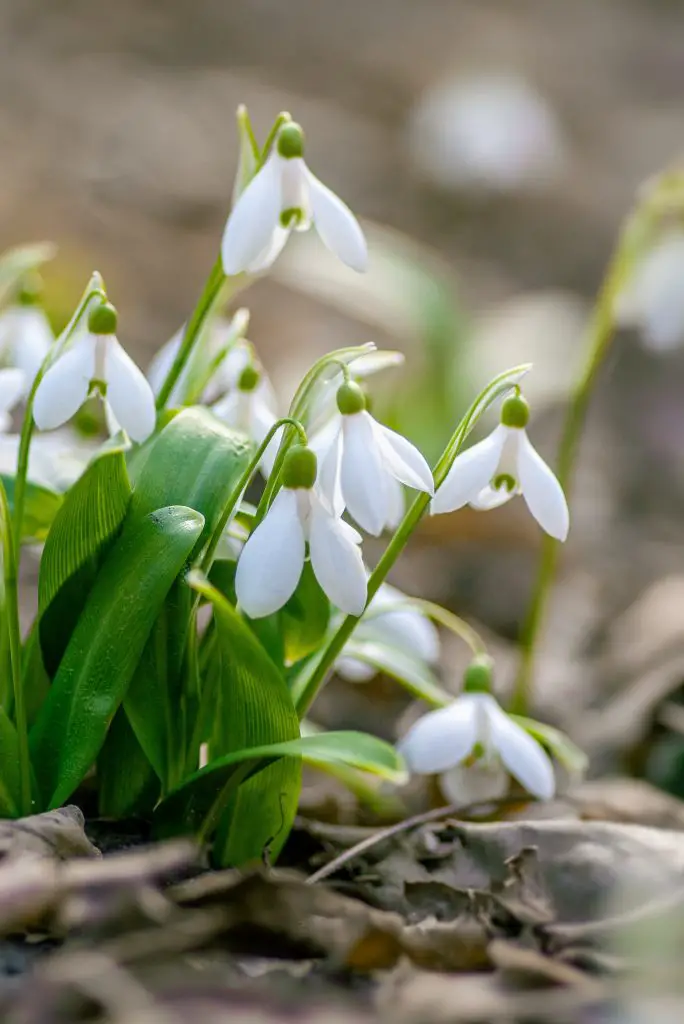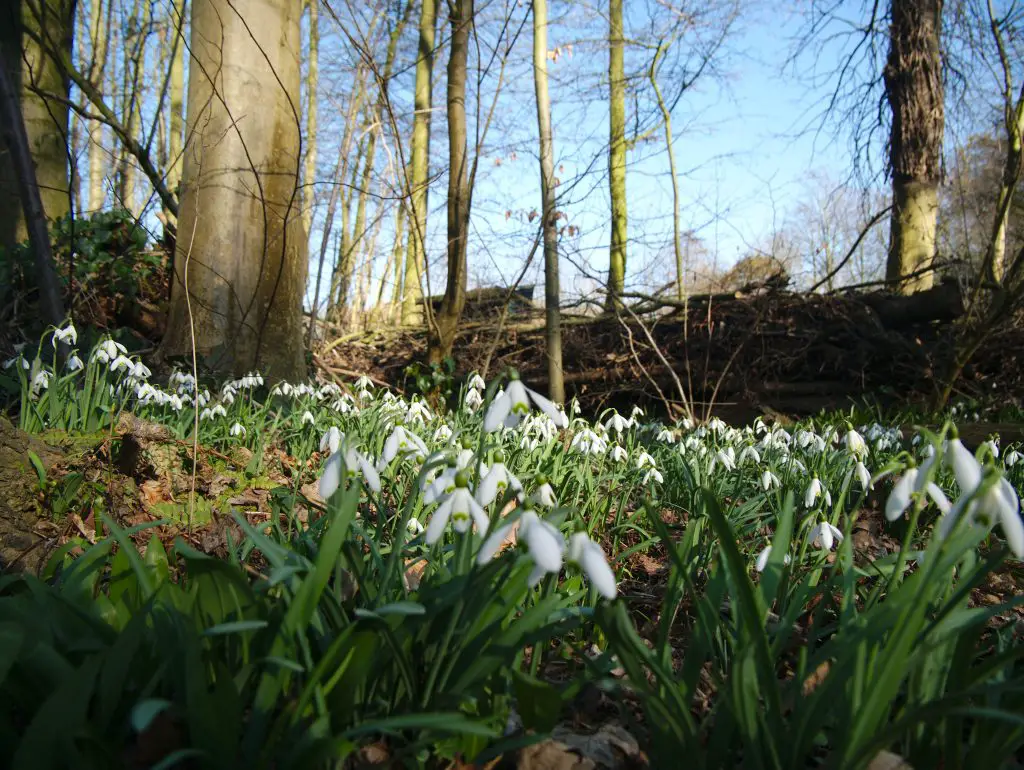Can Snowdrops Be Purple or Blue? Snowdrops are a traditional woodland plant that is among the earliest flowering bulbs appearing in late winter in many regions. The appearance of this tiny white flower is one of the first signs that warmer weather is on the way. But is white the only color that Snowdrops come in?
Snowdrops is the common name used to describe a group of around 20 different species within the Galanthus genus. All the species within this genus have white flowers, however, the genus Scilla contains a range of species that are commonly confused with Snowdrops and are often referred to as Blue or Purple Snowdrops.
This confusion is understandable given that the Scilla genus are low-growing plants produce from bulbs that appear at a similar time to snowdrops. They also have similar-looking foliage and a flower head that faces toward the ground in a similar manner to the Snowdrops. Within this genus, there are species that have blue, purple, white, and pink flowers, a photograph of the purple form is shown below.

What Is The Difference Between Snowdrops and Scilla?
While Snowdrops and Scillas are quite similar there are a few tell signs that can help tell the difference. The first and most obvious is the number of flowers per bulb. Most Snowdrops produce only one or two flowers per bulb whereas Scillas tend to produce three or four flowers bulb.
The other common feature of the Snowdrops is a small nodule at the base of the flower. This nodule is usually green in most common varieties however there are species that have a yellow nodule. In all cases, the nodule sits above the flower due to it pointing toward the ground. An example of this feature is shown in the image below.

The lack of inversion or partial inversion of the flowers is also sometimes an indicator that the plant is not a snowdrop as some species within the Scilla genus point upward.
In terms of growing conditions, the Scilla and Snowdrops prefer similar conditions. Both are hardy plants that tolerate cold conditions, though Scilla is slightly more frost-hardy and can be grown from zone 2 to 10 whereas snowdrops are recommended for zones 3 to 10.
Both prefer a sunny location rather than partial shade. This is a common misconception associated with early flowering woodland plants such as these. As both of these plants flower in late winter or early spring, they avoid the shady conditions associated with the woodland later in the season as the trees are yet to come into full leaf.
How To Plant Snowdrops And Scilla
As Snowdrops and Scilla are both spring-flowering bulbs they are generally available at the same time of the year. Snowdrop and Scilla bulbs are most commonly available in early Autumn for planting. They are also available in late winter in pots that have flowers ready to be planted straight into the garden.
When purchasing bulbs it is best to purchase them as soon as they appear in the shops as Snowdrops, in particular, have a reputation of taking time to get going. This sometimes occurs because the bulbs spend too long in the garden centres and have a tendency to dry out. In these circumstances, the bulbs may not flower the following spring.
Purchasing them in pots is generally considered a more reliable method of introducing Snowdrops to your garden, however, it is significantly more expensive. When the plants are purchased in pots they should be transferred into the garden immediately.

If you have purchased bulbs, they should be planted in Autumn at a depth of 2 to 3 inches into the soil with the pointy end facing upward. If you are wanting to make the planting look natural the method recommended by Monty Don is to gently toss them on the ground and plant them where they land.
In terms of soil conditions, it is important to ensure soil is moist but free-draining and has plenty of nutrients. It is advisable to add some additional compost if the soil is nutrient deficient and also apply a thick layer of mulch to help retain moisture.
Once the flowers are finished blooming it is important to leave the foliage and flowers to die back naturally as this is an important part of the annual cycle. The nutrients within the leaves will return to the bulb ready for the bulb to produce flowers for the following season.
If you are growing bulbs in pots it is important to ensure that the pot does not dry out through the summer period as this has the potential to kill bulbs.
After a period of a couple of years, you may find that the bulbs begin to lose vigor and produce less flowers, if this is the case it may be necessary to lift and divide the bulbs. This is best done after the bulbs have finished flowering.

